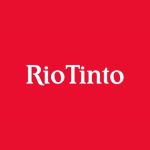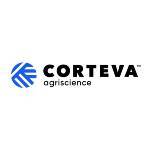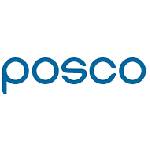Rio Tinto PLC operates in the basic materials sector, within the metallic mineral mining industry, and was founded in 1873 in the United Kingdom.
Headquartered in London, the company is one of the largest mining corporations in the world, operating across multiple continents. Rio Tinto's portfolio includes the extraction and processing of iron ore, aluminum, copper, diamonds, uranium, and other minerals essential to the global industry.
The company also invests in research and innovation to optimize the sustainable exploration of natural resources. Its global presence spans more than 30 countries, with operations in Australia, Canada, the United States, Brazil, Mongolia, and Africa.
Iron ore is one of the company’s main products, extracted on a large scale in Australia and Canada to meet global demand, particularly from China, India, and Europe.
Beyond mineral extraction, Rio Tinto adopts sustainability and environmental responsibility practices, investing in technologies to reduce carbon emissions, improve material recycling, and enhance energy efficiency across its operations.
The company’s operational structure includes mines, smelters, refineries, ports, and distribution centers, ensuring logistical efficiency and the delivery of raw materials to various industries.
With a workforce of 47,500 employees, the company maintains large-scale operations that contribute significantly to the global supply chain.
Rio Tinto PLC shares are traded on the NYSE under the ticker RIO.
History and when Rio Tinto PLC was founded
Rio Tinto PLC was founded in 1873 in the United Kingdom, after a consortium of investors acquired copper mines in the Rio Tinto region of Spain. Since then, the company has expanded its operations globally, becoming one of the world's leading mining companies.
In its early years, the company focused on copper extraction in Spain, but throughout the 20th century, it diversified its activities to include iron ore, aluminum, diamonds, and other metals essential to global industry.
International expansion occurred gradually, with the acquisition of operations in Australia, North America, and Africa.
In 1962, Rio Tinto merged with the Consolidated Zinc Corporation, forming the Rio Tinto-Zinc Corporation (RTZ), further strengthening its position in the global mining market.
In the following years, the company carried out key developments and strategic moves:
-
1995: Restructuring and creation of the current corporate model, split between Rio Tinto PLC (UK) and Rio Tinto Limited (Australia).
-
2007: Acquisition of Alcan, making it one of the world's largest aluminum producers.
-
2018: Divestment of coal assets to focus on strategic metals and minerals.
-
2020–2024: Investments in sustainability and responsible mining projects, including initiatives to reduce carbon footprint and adopt renewable energy sources.
Over the decades, Rio Tinto has faced challenges related to environmental regulation and commodity price volatility but has maintained its position as one of the largest global mining companies.
In recent years, it has continued to invest in sustainable mining, technological innovation, and process optimization, aligning with market demands and the global energy transition.
Additional Information
The Company Rio Tinto PLC (United States), is listed on NYSE with a market cap of $ 113.66 Billions, having an equity of $ 61.97 Billions.
With a total of 47.500 employees, the company is listed in the sector of Basic Materials and categorized in industry of Extraction of Metallic Minerals.
In the last 12 months the Company had a revenue of $ 107.20 Billions, which generated a profit in the amount of $ 21.20 Billions.
As for its main indicators, the Company has a P/E ratio of 5.36, a P/BV ratio of 1.83 and in the last 12 months the dividend yield of RIO was at 5.33%.
The Company is traded internationally through the ticker RIO.






































